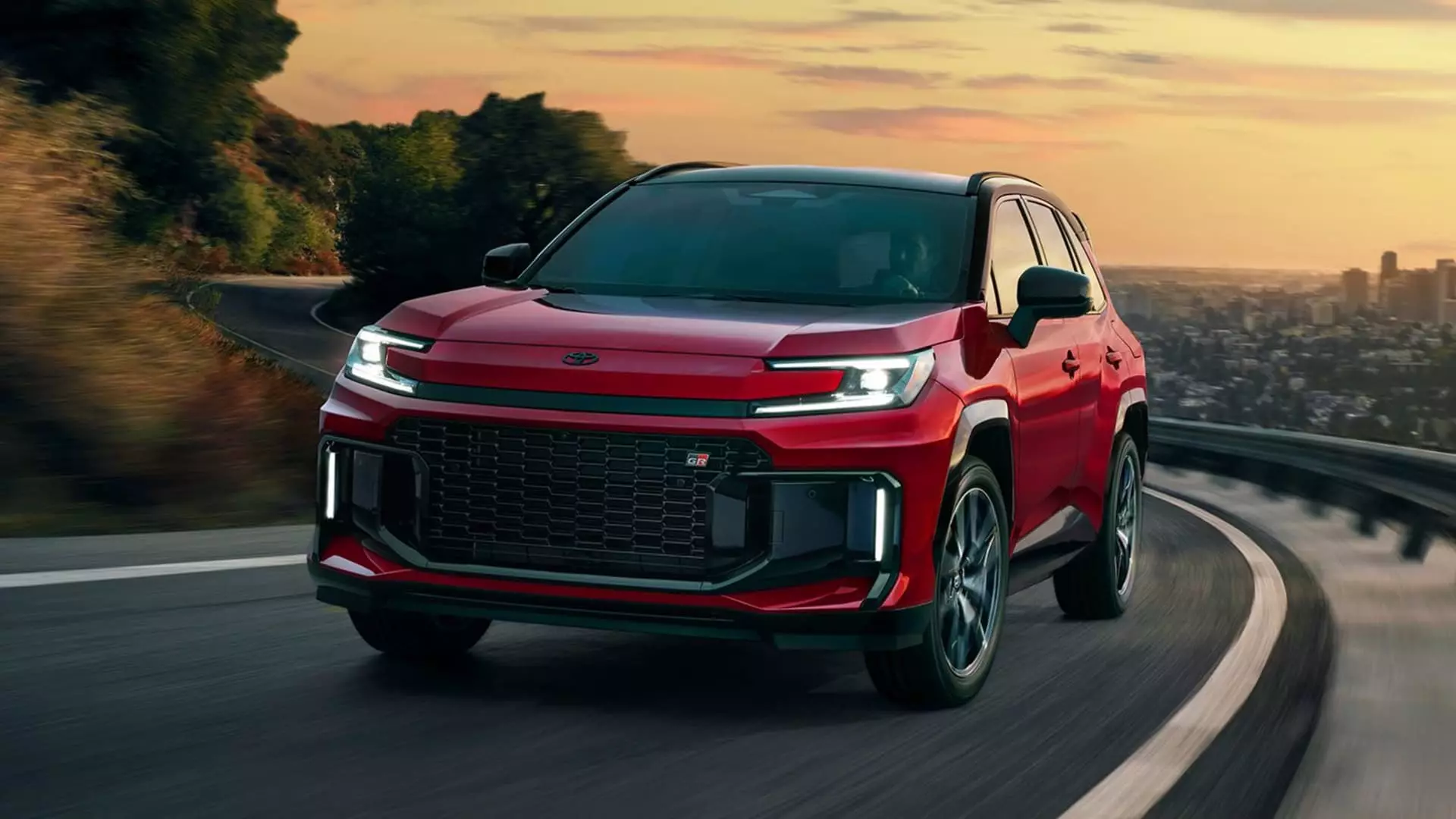Automotive enthusiasts are experiencing a jolt of transformation as Toyota Motor Corporation announces its leap into the future—exclusively offering the RAV4 as a hybrid or plug-in hybrid for the 2026 model year. This strategic change could fundamentally reshape the landscape of the American automotive sector. Toyota, the established leader in hybrid technology, is clearly setting a precedent that goes beyond mere compliance with fuel regulations; it’s about reimagining market trends amidst a climate of fluctuating consumer demand.
Historically, the RAV4 has dominated the SUV market, and it now embodies the core of Toyota’s innovation strategy. With over 475,000 units sold last year, the brand is tapping into a well of consumer interest, where expectations for hybrid vehicles are at an all-time high. This bold declaration reinforces the necessity of addressing both performance and environmental concerns head-on.
Consumer Preferences Shifting Towards Hybrids
One cannot ignore the evidence: a vast majority of RAV4 buyers have favored hybrid models. David Christ, the head of Toyota’s North American division, emphasized that consumers are loudly voting for hybrids, a sentiment that is difficult for traditional automakers to sidestep. With hybrid sales skyrocketing—44% of RAV4 sales last year alone—Toyota’s pivot signifies an acknowledgment of evolving consumer preferences. The industry can now read the clear signals sent by buyers who desire a balance of fuel efficiency and reliability without abandoning the convenience of traditional engines.
With hybrid technology already offering the exciting promise of better acceleration, higher fuel efficiency, and an increasingly engaging driving experience, the decision to drop conventional gas engines could be viewed not as a loss, but as a gain—especially for a demographic concerned about the environmental impact of fossil fuels.
Regulatory Pressures and Market Dynamics
While the automotive market increasingly adapts to the call for eco-friendly technology, governmental regulators are tightening the screws. Amidst fears of climate change, automakers are faced with strict fuel economy regulations that only intensify the call for innovation. Toyota’s extensive experience with hybrids—from the original Prius to the updated RAV4—positions it well within this regulatory environment. Instead of being chastised for failing to lead in the all-electric race that many competitors are focusing on, Toyota is redefining leadership by ensuring a robust hybrid line.
The statistics paint a clear picture: in 2024, electrified vehicle sales claimed a record 20% of all vehicle sales in the U.S., signaling a monumental shift toward hybrid and all-electric vehicles alike. Ironically, the slow uptake of fully electric vehicles has allowed hybrids to maintain their relevancy as a transitional solution—an aspect that Toyota is grasping wholeheartedly.
Challenges and Opportunities in Production
However, success doesn’t come without its hurdles. Combine the ambitious roadmaps for hybrid vehicles with ongoing tariffs on imported automotive parts and vehicles, and you’ve got a complex web of challenges. While President Trump’s tariffs on imported vehicles have raised eyebrows and concerns, executives like Mark Templin are optimistic. Plans to boost RAV4 production in the United States may yield a more robust supply chain that mitigates the tariff-induced economic strain.
Despite concerns over import quotas, Toyota has been probing the waters of risk assessment and strategic planning to navigate a future that remains uncertain. The intended adaptation of additional manufacturing facilities indicates an aggressive approach to staying ahead of competitors—all while insulating the consumer from price hikes.
The Future of the Automotive Landscape
The transition to an all-hybrid RAV4, combined with a dedicated strategy for expanding its electric offerings, signals a significant recalibration in the automotive marketplace. While the industry bears witness to other entities pushing heavily toward all-electric models, this hybrid-centric approach can be interpreted as a sophisticated understanding of consumer behavior and market demands.
Far from being a mere trend, the hybrid model is earning its rightful place as a pivotal player in the automotive hierarchy. In many ways, Toyota is not just reacting to the present demand; it is actively shaping the road ahead. The RAV4, now on the cusp of this transformation, could serve to further anchor Toyota’s legacy as a leader, innovator, and champion of hybrid technology—a status that competitors may struggle to replicate in this rapidly changing landscape.
By carefully gauging the desires of the market while factoring in regulatory demands, Toyota is taking calculated risks with high rewards. It’s clear: hybrid technology is here to stay.

